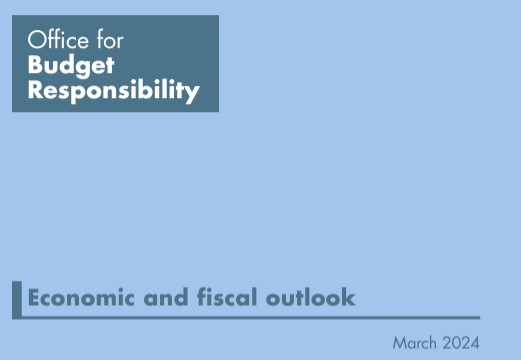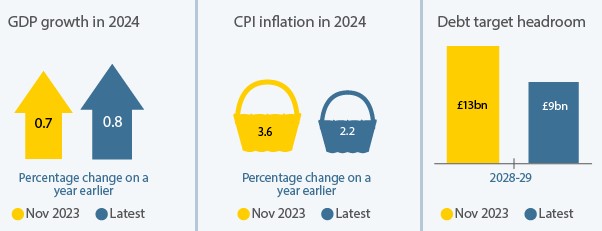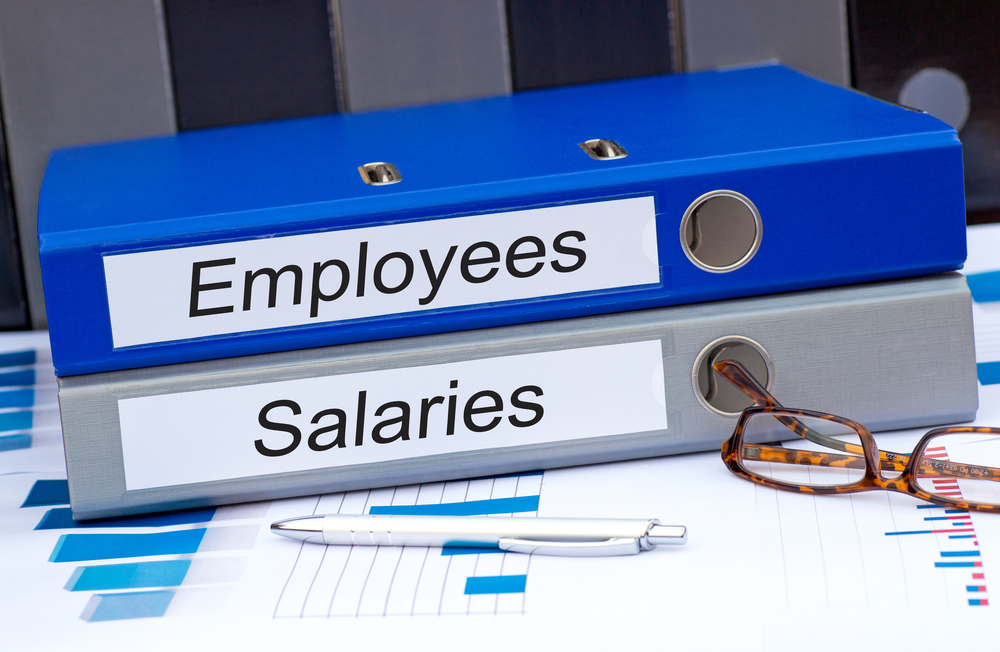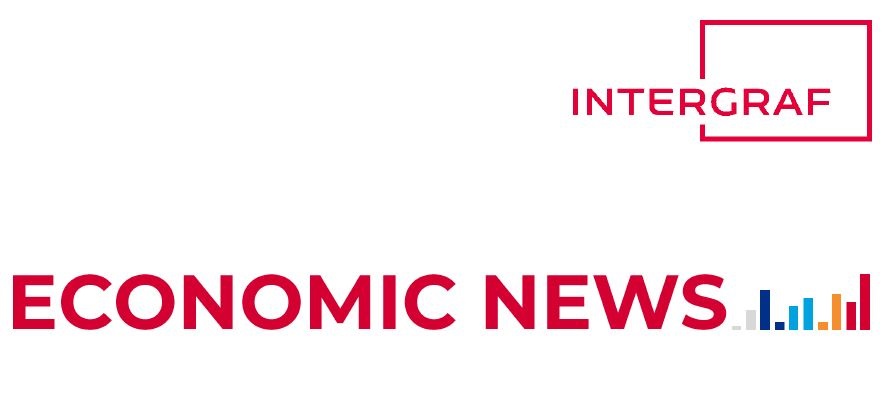March 2024

Budget cuts taxes but also leaves smaller margin against the Government’s fiscal rules
Overall, the economic and fiscal outlook is similar to November. While growth has slightly disappointed since then, a steeper fall in inflation and interest rates should support a stronger recovery. Against this backdrop, the Budget announces another 2p cut in national insurance, the cost of which is partly recouped through other tax rises. Public services spending is largely unchanged and no longer grows in real per person terms. These plans allow the Chancellor to meet his aim for debt to fall as a share of GDP with £9 billion to spare - a tiny fraction of the risks around any forecast.

Here are five things you need to know:
1) Looking first at what has happened to inflation and interest rates, we see that inflation has come down faster than anticipated in November. And is now expected to fall below 2 per cent later this year. Markets now also expect interest rates to fall faster, alleviating some of the squeeze on household and government finances.
2) Looking next at the economic forecast, despite higher expected growth in the UK population, the medium-term level of GDP is little changed compared to the November forecast. That's because the OBR also expect higher and more persistent rates of economic inactivity - which means real GDP per person is now lower than expected in November.
3) The OBR fiscal forecast is also little changed. Looking at what has happened to the outlook for government borrowing since November:
- Lower debt interest and other spending reduces borrowing by an average of £15 billion-a-year over the next five years;
- But this is offset by less of an inflationary boost to underlying tax revenues by the fifth year of our forecast;
- These forecast changes give the Chancellor a net fiscal boost of around £10 billion over the next two years, but leave borrowing largely unchanged by the fifth year of our forecast;
- In his Spring Budget, the Chancellor spends all of this windfall on another 2p cut to National Insurance and another freeze in fuel duty, whose cost is partly recouped by new taxes on vapes, carbon imports, and non-doms.
4) The Budget makes no significant changes to the planned level of spending on public services. Having first set out detailed department-by-department plans in October of 2021 the Government has then topped these up in cash terms in successive fiscal events. But the real value of this spending per person has been steadily eroded since then. First by higher inflation and then by higher growth in the population. Meaning real per person spending on public services no longer grows over the next 5 years.
5) How does all of this stack up against the fiscal rules? The forecast and policy changes in this Budget leave the Chancellor with £9 billion to spare against his aim of getting debt to fall as a share of GDP in five years' time. This sounds like a big number, but it's a small fraction of the risks to the fiscal outlook over this period.
Source: Office for Budget Responsibility, www.obr.uk
Downloads Pay Review Data, Wage Benchmarking and Cost of Living – MAY 2024 UPDATE
Pay Review Data, Wage Benchmarking and Cost of Living – MAY 2024 UPDATE
May 2024
We have collated data from multiple sources that should be useful for BPIF members that are approaching internal pay reviews, and/or are having a closer look at their pay and benefits structure. The datafile, first published in February 2023, has been updated with the latest available data - and additional content on factors exerting pressure on pay settlements in 2024.
 Intergraf Economic News (Paper Prices) - April 2024
Intergraf Economic News (Paper Prices) - April 2024
April 2024
Access the latest edition of the Economic Newsletter for the European Printing Industry for data on paper consumption, and pricing data for pulp, paper and recovered paper.










